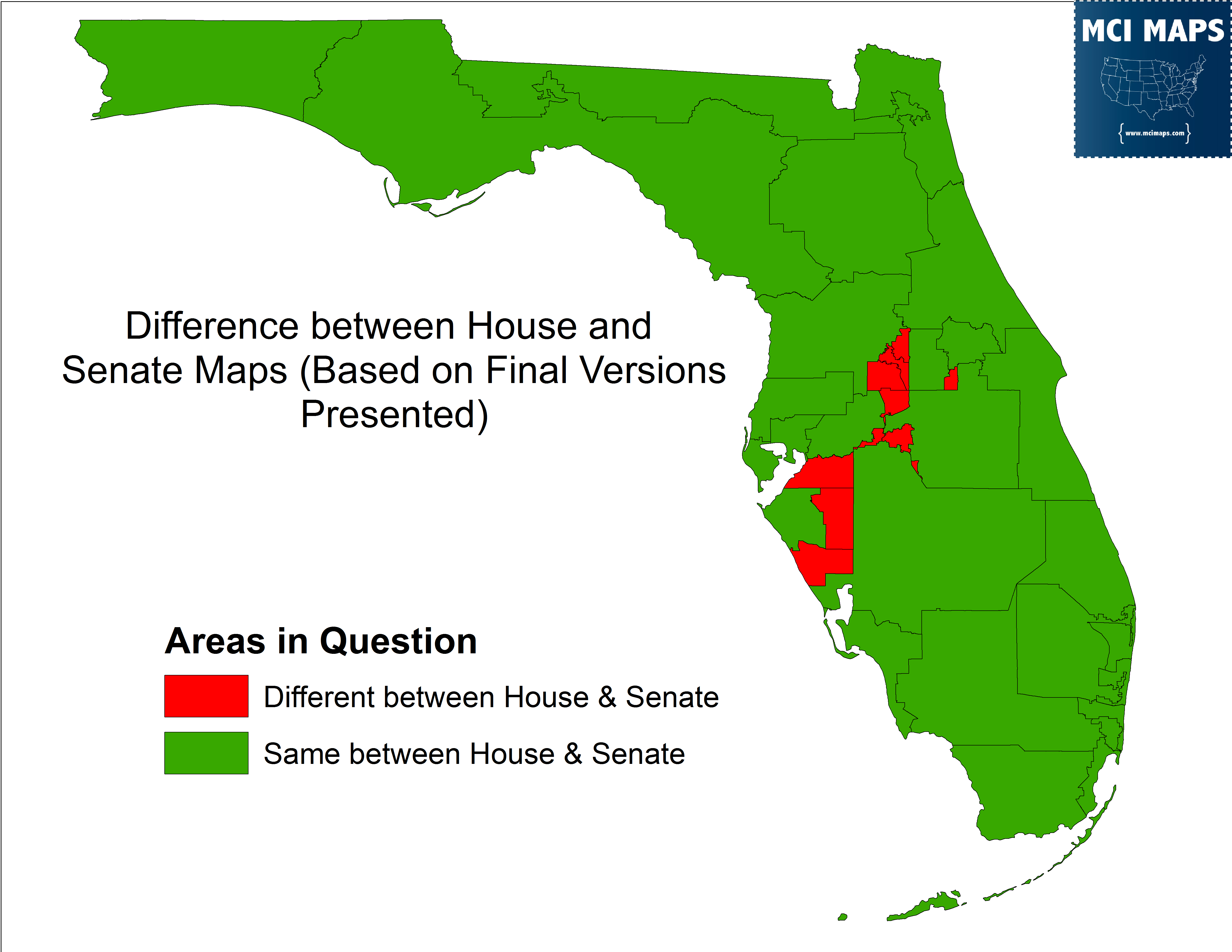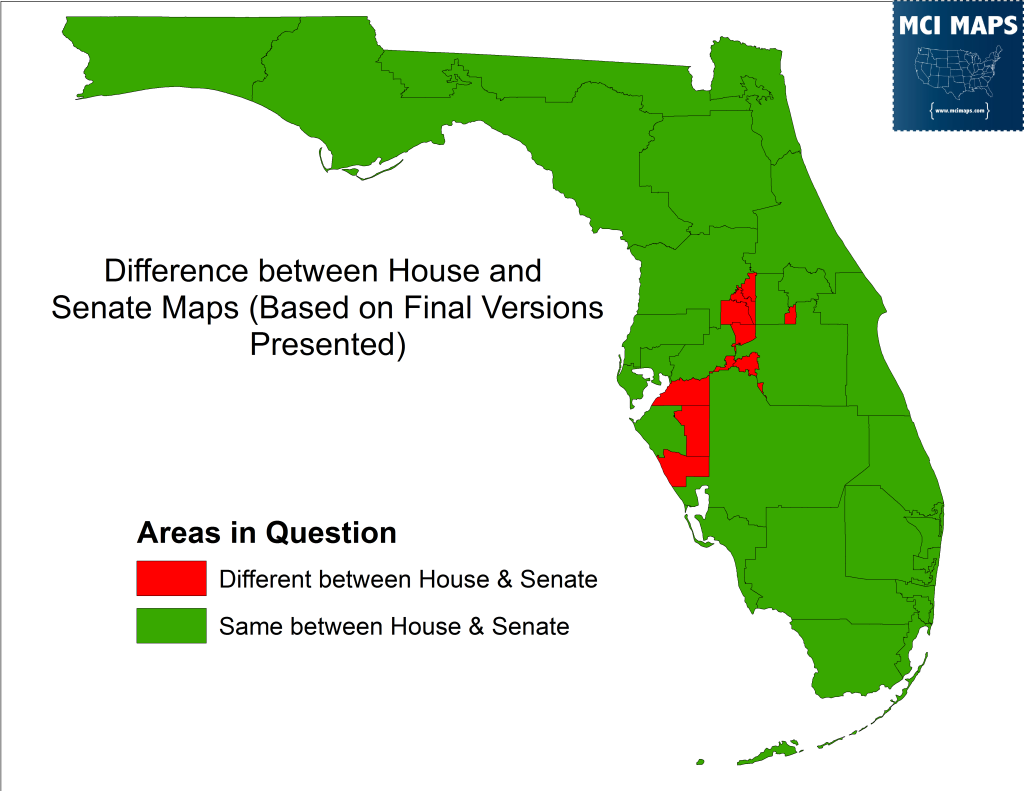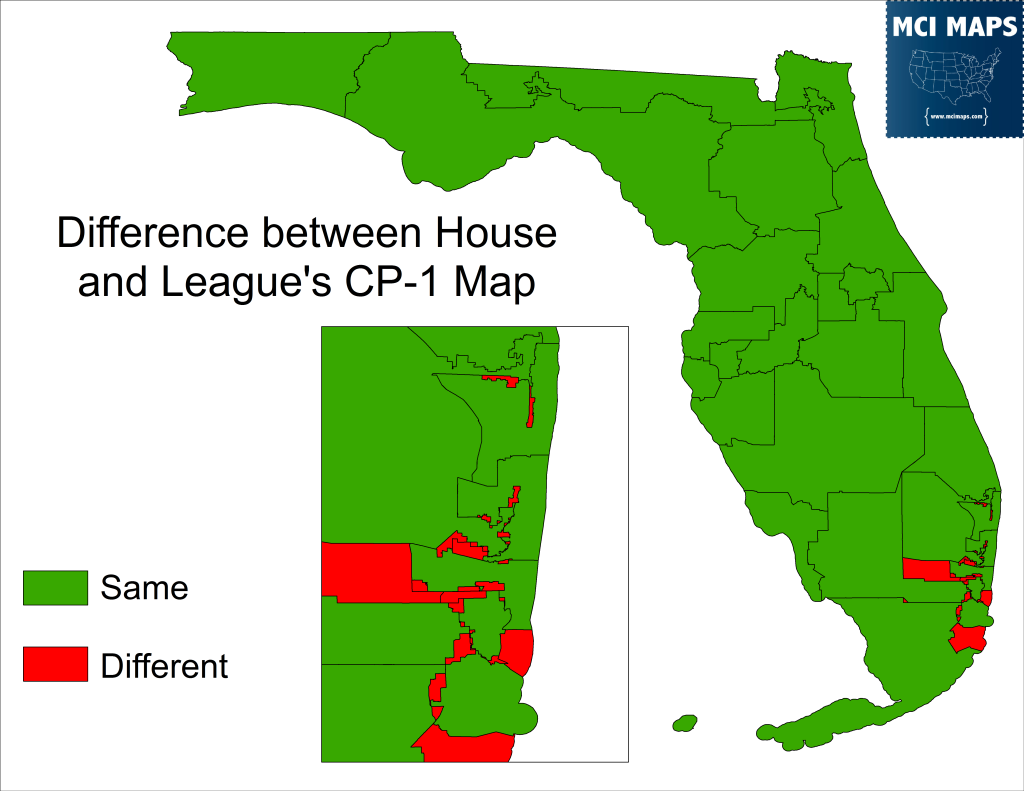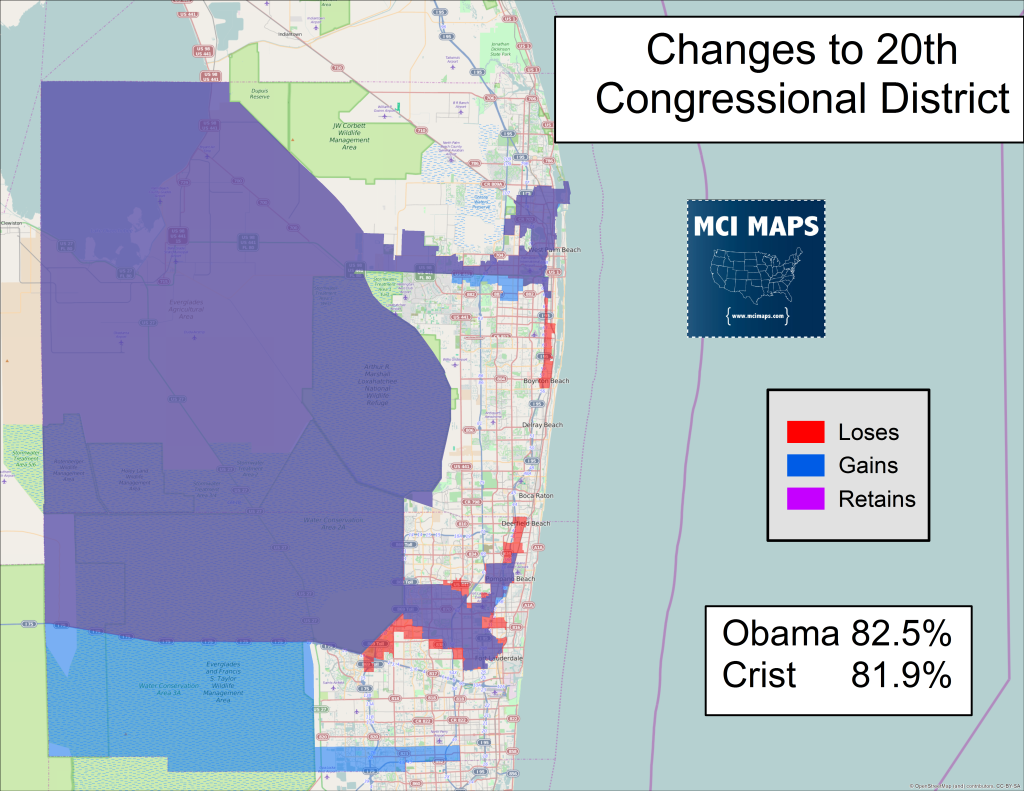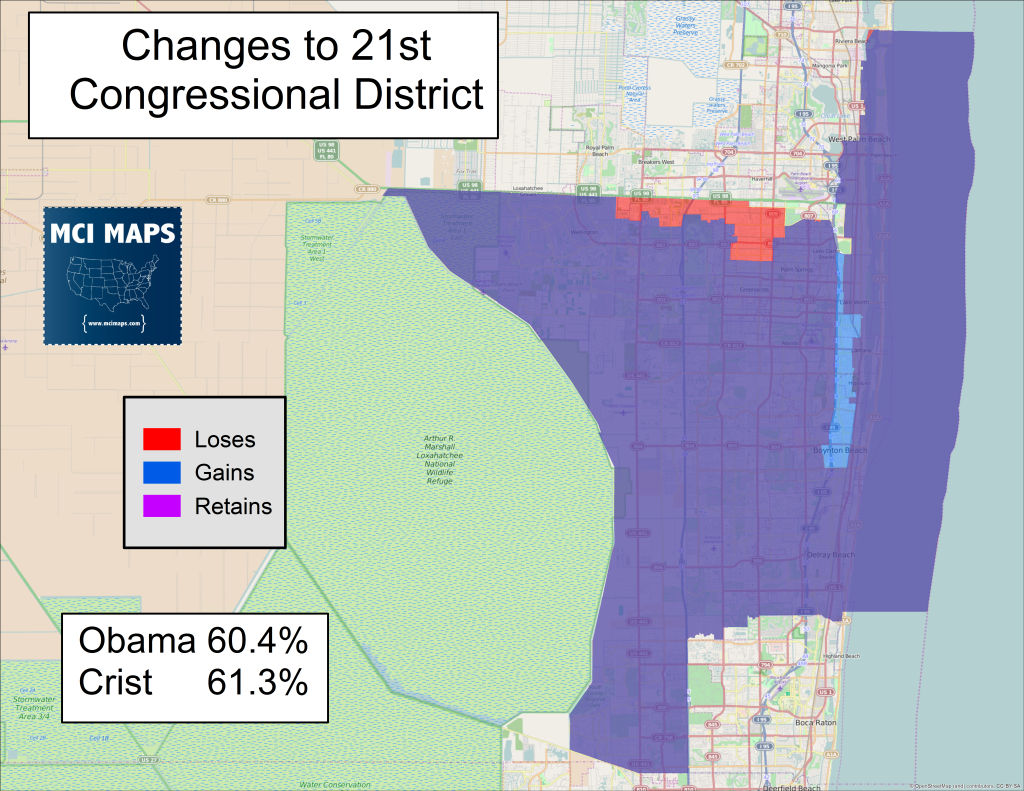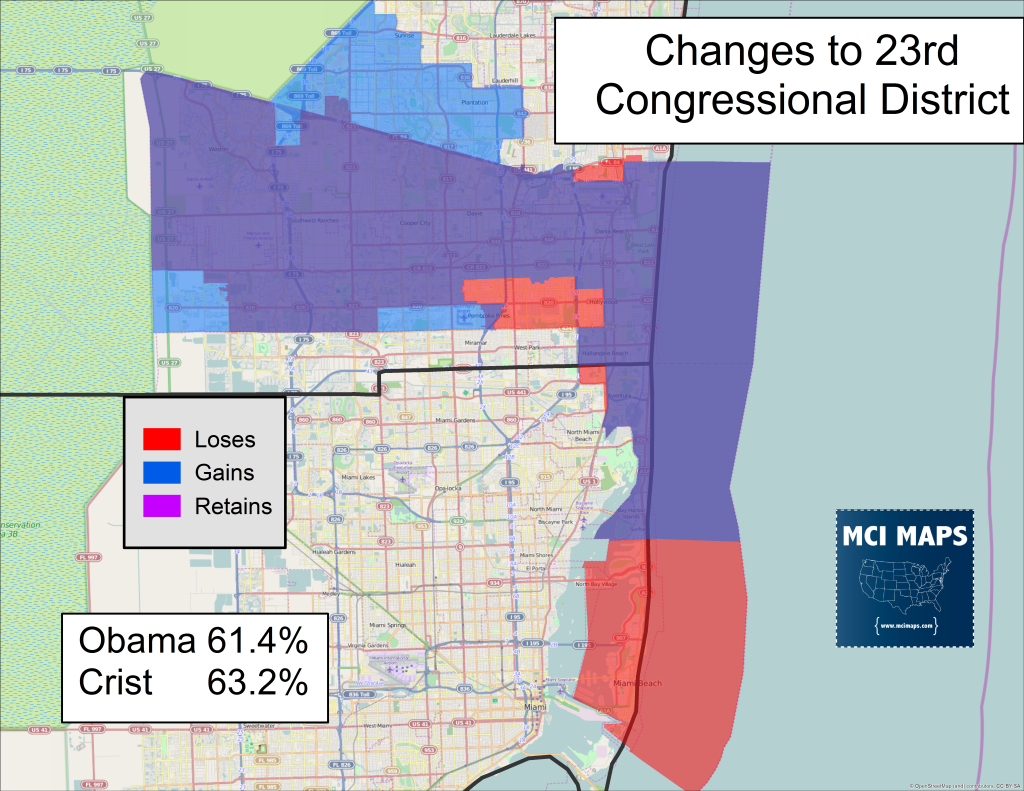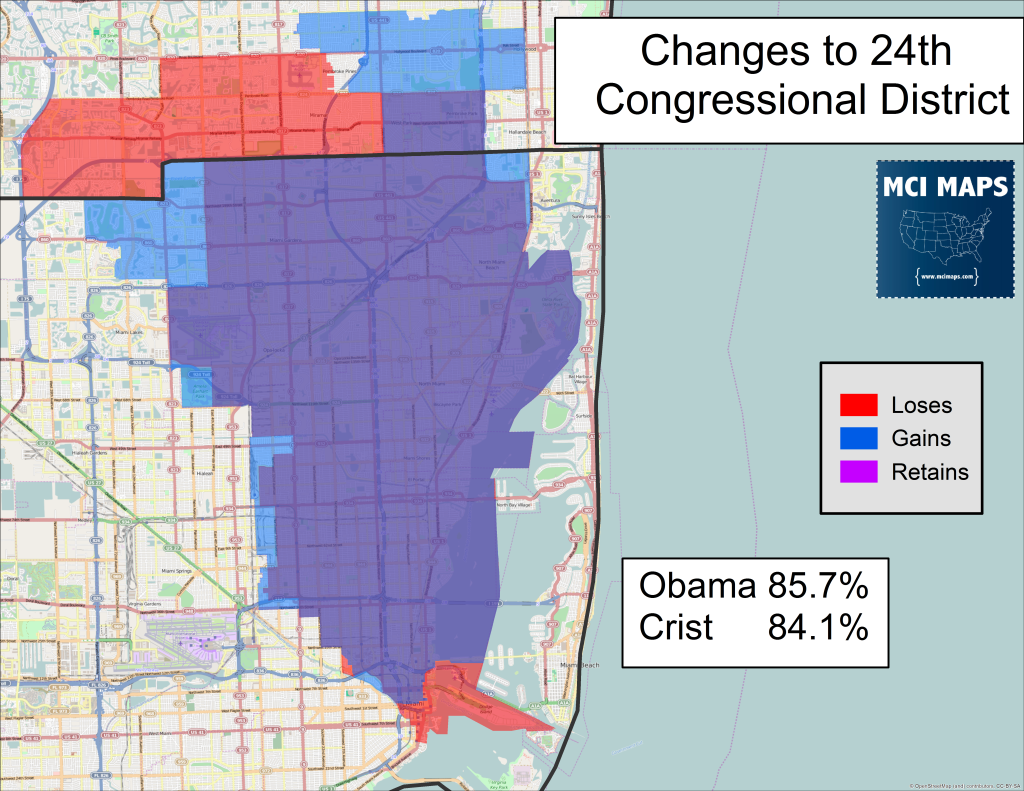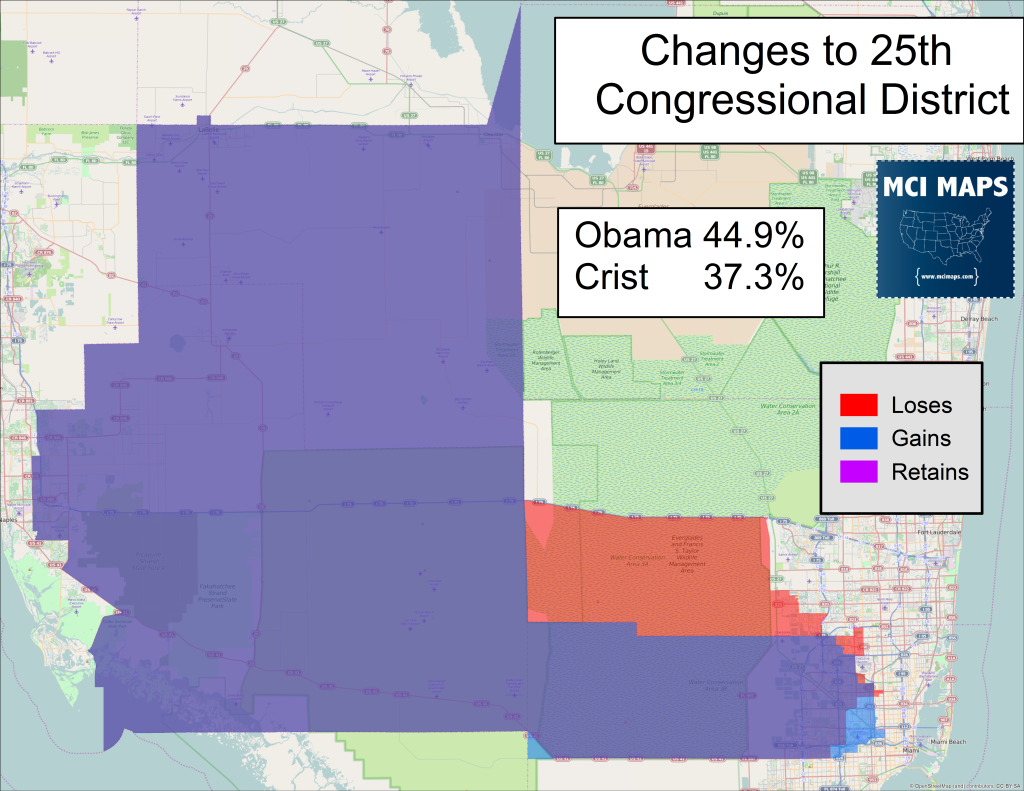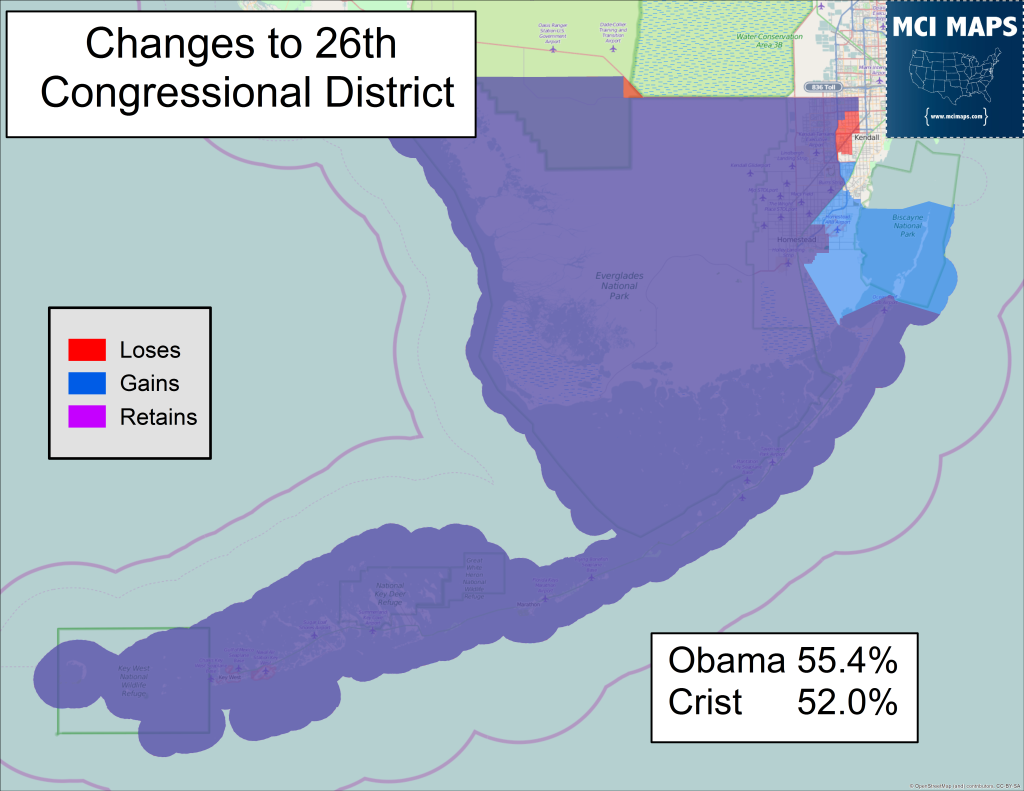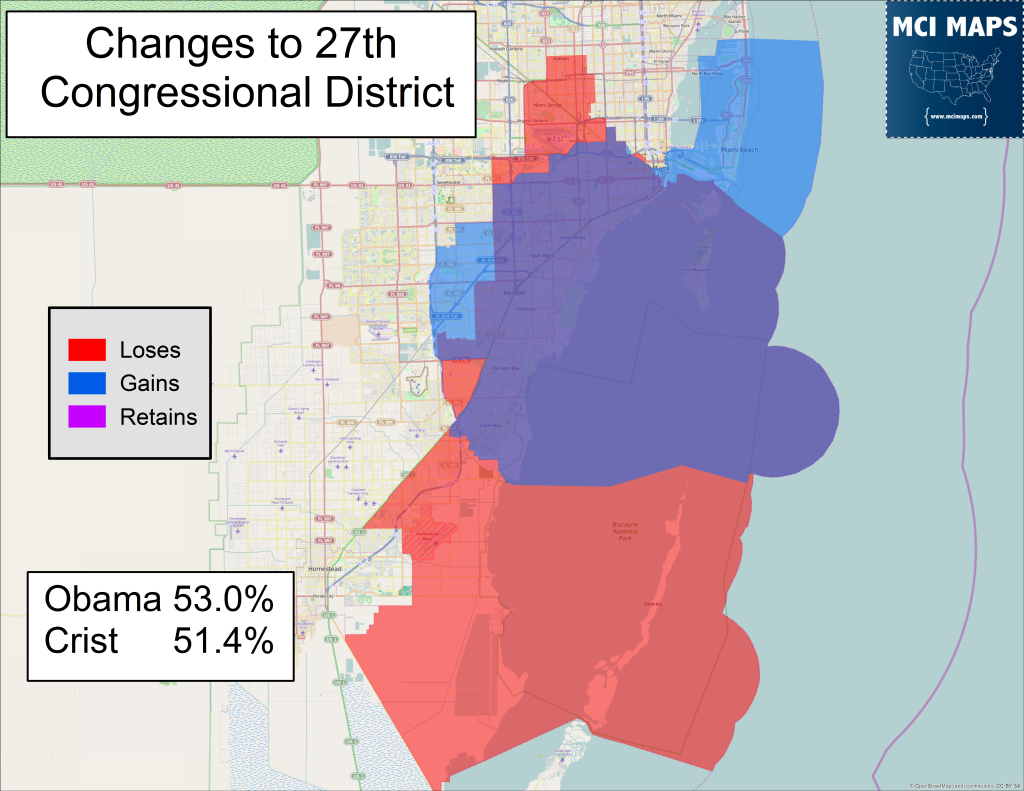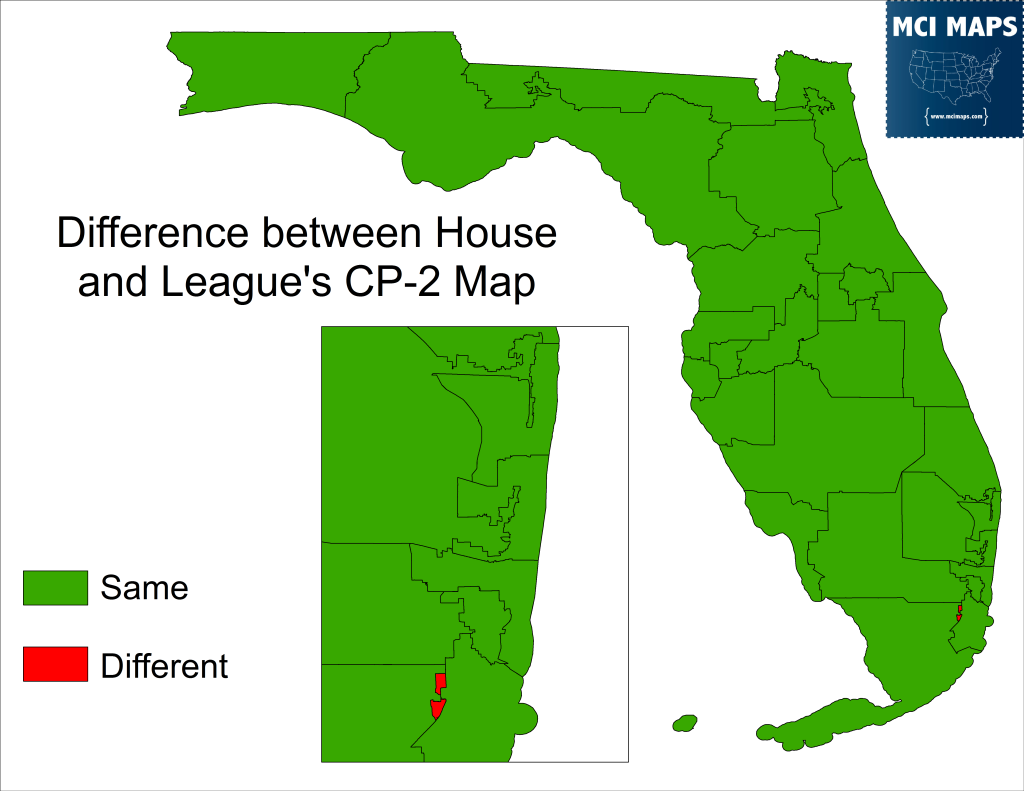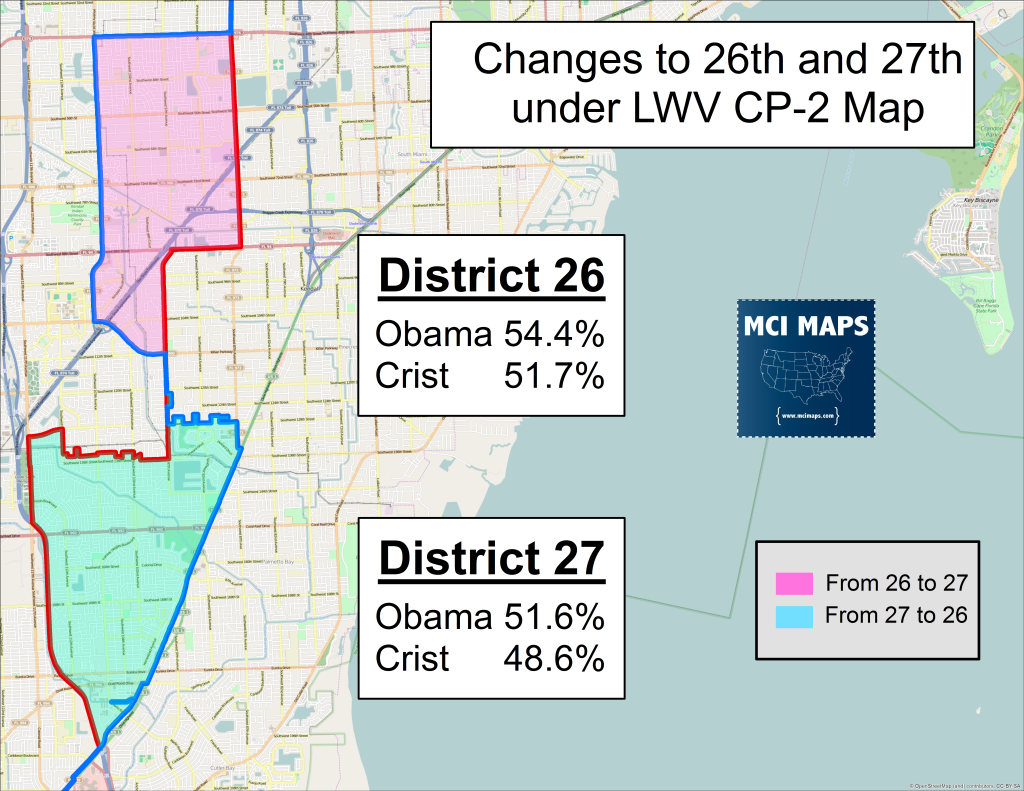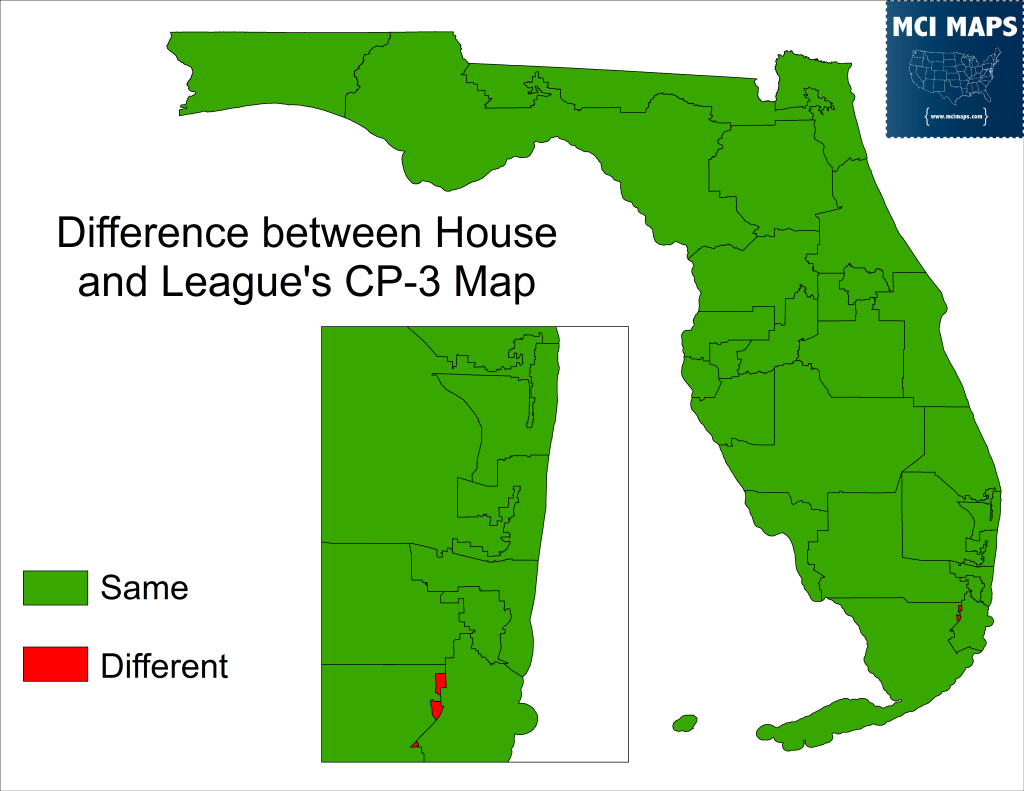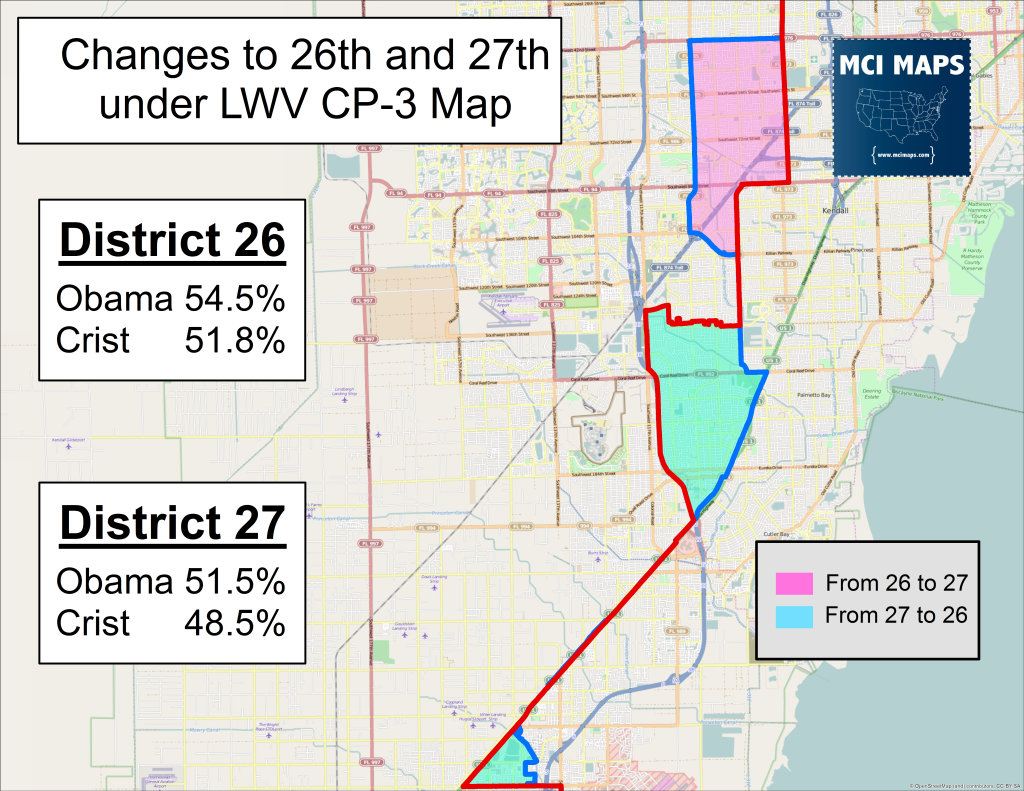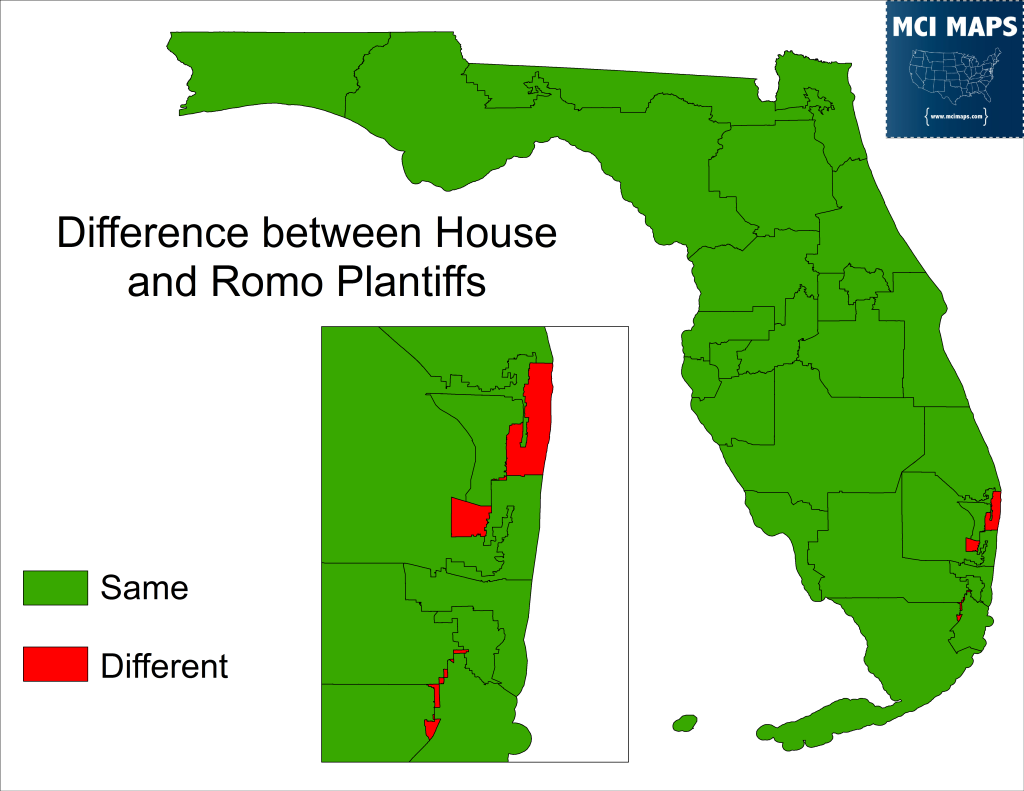When Judge Terry Lewis convenes his redistricting trial later this month, there will be 7 different maps to examine — three from the Legislature and four from the plaintiffs. This article will cover some key differences in the maps being proposed. The specific focus is going to be on the maps submitted by the plaintiffs and how they compare to the Legislature’s proposals.
Debate Between the House and Senate
The differences between the House and Senate’s final maps are minimal. Debate centers in the Orlando area and the Tampa Bay region.
The failure of the Legislature to come to an agreement revolves around the mistrust and animosity between the two chambers. It is truly amazing so little an area derailed the whole process.
- You can view the House map here
- You can view the Senate map here
- The Senate actually proposed another potential map. Which can be seen here
The Senate compromise map is just bizarre. The map destroys the rural nature of CD17, stretches CD9 from Orlando to Glades County, and makes other moves that made little sense. I don’t see any scenario where it becomes law.
The Senate’s initial map is superior in my eyes. I believe the Senate better handled Hispanic voters in Central Florida. I wrote about this issue in Politico Florida. The key issue is that Hispanics are being unnecessarily split between CD10 and CD9. The Senate map still has some split but it does a better job of keeping Hispanics concentrated in CD9 where they can influence the primary. I wrote about how the Senate map fixes this issue in a separate Politico Florida article.
While I think the Senate map is better, I believe something closer to the House map will likely be chosen. The reasoning is fairly simple, the House map is largely drawn by staff with little legislative input (supposedly). Judge Lewis may find that argument appealing. It appears the plaintiffs likewise think the House map is likely to be chosen. All of their proposed amendments make changes to the House map while ignoring the Senate map.
A key point of debate for the plaintiffs are Districts 26 and 27.
During the redistricting session, the heavily Democratic area of Perrine (an African-American community) was moved from CD26 to CD27. This made CD26 less Democratic while the 27th, held by Republican Ileana Ros-Lehtinen, became bluer. Since Ros-Lehtinen is always safe for re-election, and CD26 Congressman Carlos Curbelo is more vulnerable, questions of gerrymandering arose. I also wrote about this issue in Politico Florida. Every plaintiff map moves Perrine back into CD26.
I’m going to compare each of these plaintiff maps to the House map one by one.
House Map Compared to First Coalition Map
The coalition plaintiffs (League of Women Voters, Council of La Raza, and Common Cause) propose three different maps. The first map makes the most changes to the House proposal.
The proposal makes changes to several districts across South Florida.
District 20
District 20, the African-American seat held by Alcee Hastings, sees some key changes. The district loses an appendage it had in Palm Beach, loses part of its central-Broward appendage (both contain African-Americans), but then picks up eastern Miramar from the 25th and 24th.
The district also sheds less-African American precincts on its border, losing much of Sunrise. The district retains its heavily Democratic nature and would still remain safe for Hastings. The African-American VAP remains around 50%. The connection to Miramar is open Everglades land that is unpopulated.
District 21
District 21 sees very small changes. It takes in the appendage from CD20 and trades some other precincts to even the population out. The district remains Democratic.
District 22
District 22 has some modest changes, but the overall nature of the district remains the same. The district takes in some African-Americans in the Central Florida appendage and loses the city of Plantation.
The district becomes slightly more Democratic thanks to taking in African-American voters and losing a modestly Democratic city.
District 23
The 23rd district takes in Plantation and Sunrise while losing coastal precincts further south.
The district remains solidly Democratic.
District 24
District 24, the African-American seat held by Fredrica Wilson, loses some African-American voters in Miramar largely to the 20th.
The district goes from 54% Black VAP to 50%. The district still remains heavily Democratic and Wilson’s only worry would be a primary.
District 25
The 25th trades precincts with the 20th, 24th and 27th. The biggest changes are made to allow the 20th to stretch into Miramar in South Broward, while it regains population by taking precincts from the 27th further into Miami-Dade.
The District’s loss of heavily Democratic precincts, especially those in Miramar, take the district from 48% Obama down to 44%. The district becomes a less attractive Democratic target under this map.
District 26
District 26th takes in Perrine and several South Dade precincts, becoming much more Democratic in the process.
The precincts taken in are Democratic while the ones it loses are more divided. This gives the district a more solidly Democratic footing compared to the House map.
District 27
The 27th sees some major changes. It loses Perrine and several southern precincts to the 26th and loses some areas to the 25th; meanwhile it takes in areas the 23rd lost on the coast.
The district becomes less Democratic, dropping around 1.4% in the presidential race but only dropping a 10th of one percent in the governor’s race. Under the House map, Obama got 54.3% to 51.5%, a gap of 2.8. The gap under these lines is down to 1.6. Many of precincts the district losses, especially around Hialeah, saw much larger drops between Obama and Crist. The removal of those precincts reduced the overall gap between the two Democratic candidates. The district will continue to be out of Democratic hands until it becomes open.
House Map Compared to Second Coalition Map
The second map by the plaintiffs is much simpler. Changes are reduced to Districts 26 and 27.
The proposal moves heavily Democratic, African-American Perrine back into the 26th while taking Hispanic precincts further North and putting them in the 27th.
The trading of the two areas, one heavily Democratic and the other leaning Republican, makes the 26th more Democratic than under the House map while the 27th becomes more Republican; having narrowly voted for Scott in 2014.
House Map Compared to Third Coalition Map
The third map by the coalition is an alternative method of giving Perrine back to the 26th. The map just trades out other areas to even the population.
The makeup of the districts is essentially the same as under the 2nd coalition map. The 26th becomes more Democratic while the 27th becomes more Republican.
House Map Compared to ROMO Map
The final plaintiff map comes from a group of Democratic-leaning voters. Their map is commonly referred to as the ROMO map. This proposal also focuses on South Florida, making changes to the 26th and 27th while also maintaining districts 21 and 22 as parallel, rather than stacked.
Regarding Districts 21 and 22, the proposal would reinstate the North-South coastal districts and the North-South inland districts.
This would not change the partisan nature of the districts too much; both remaining Democratic. The proposal would be a sigh of relief for Lois Frankel and Ted Deutch, who would no longer be drawn into the same district.
Meanwhile, down in Miami-Dade, several precincts get traded around.
The biggest change, again, is Perrine getting moved back into the 26th. This makes the 26th more Democratic but the 27th becomes more Republican than under any other proposed map.
Conclusions
It appears that most of the debate is focused on South Florida. Districts 26 and 27 still remain a key point of debate and I imagine the issue will be flushed out in good detail during the trial. The different plaintiff maps only nudge the partisan makeup of the congressional lines compared to the House or Senate plans.
The chart below compares presidential and gubernatorial numbers across all different plans.
While all plaintiff maps make the 26th more Democratic, some of them reduce the Democratic edge in the 27th. The changes to 27 are a non-factor now due to Ros-Lehtinen’s popularity, but when the seat is open, it will be a different story. Overall, though, both the 26th and 27th remain Obama districts under any proposed map. The changes proposed, with the exception of the Coalition’s first proposal, are fairly minor and concentrated in small, dense areas.
While the House and Senate may have a bigger court debate over Hillsborough and Orange County, it appears the plaintiffs will largely be arguing over a handful of precincts in Miami-Dade.
However, as the different numbers show, in super-dense South Florida, a handful of precincts can dramatically alter results.

